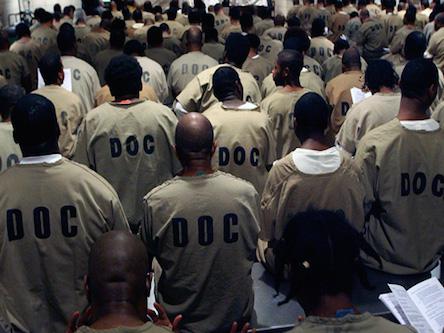Diversity Macht Frei
February 12, 2017
This is hilarious. For decades, leftists and negro activists have been complaining that “cracker” cops and judges were biased against blacks. In response, some agencies involved in the justice system have started using predictive software to make critical decisions. This eliminates the human element, the alleged source of bias, being based entirely on statistical data analysis.
But now SJWs are complaining that the computers, the software and the data are “racist” because they keep predicting (correctly) that negroes are much more likely to commit crime.
Big data has expanded to the criminal justice system. In Los Angeles, police use computerized “predictive policing” to anticipate crimes and allocate officers. In Fort Lauderdale, Fla., machine-learning algorithms are used to set bond amounts. In states across the country, data-driven estimates of the risk of recidivism are being used to set jail sentences.
Advocates say these data-driven tools remove human bias from the system, making it more fair as well as more effective. But even as they have become widespread, we have little information about exactly how they work. Few of the organizations producing them have released the data and algorithms they use to determine risk.
We need to know more, because it’s clear that such systems face a fundamental problem: The data they rely on are collected by a criminal justice system in which race makes a big difference in the probability of arrest — even for people who behave identically. Inputs derived from biased policing will inevitably make black and Latino defendants look riskier than white defendants to a computer. As a result, data-driven decision-making risks exacerbating, rather than eliminating, racial bias in criminal justice.
Consider a judge tasked with making a decision about bail for two defendants, one black and one white. Our two defendants have behaved in exactly the same way prior to their arrest: They used drugs in the same amount, have committed the same traffic offenses, owned similar homes and took their two children to the same school every morning. But the criminal justice algorithms do not rely on all of a defendant’s prior actions to reach a bail assessment — just those actions for which he or she has been previously arrested and convicted. Because of racial biases in arrest and conviction rates, the black defendant is more likely to have a prior conviction than the white one, despite identical conduct. A risk assessment relying on racially compromised criminal-history data will unfairly rate the black defendant as riskier than the white defendant.
To make matters worse, risk-assessment tools typically evaluate their success in predicting a defendant’s dangerousness on rearrests — not on defendants’ overall behavior after release. If our two defendants return to the same neighborhood and continue their identical lives, the black defendant is more likely to be arrested. Thus, the tool will falsely appear to predict dangerousness effectively, because the entire process is circular: Racial disparities in arrests bias both the predictions and the justification for those predictions.

